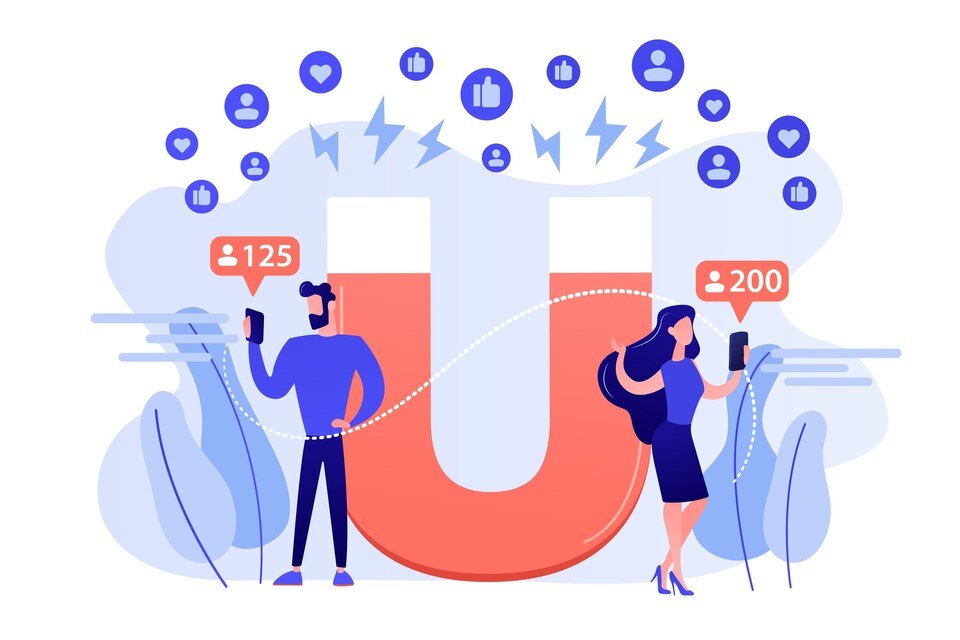Referral Traffic: 4 Types Of Links That Drive Real Results
In the ever-changing digital marketing environment, referral traffic is typically overlooked in favor of quality backlinks and SEO domination. However, understanding and using referral links may provide constant, high-quality traffic. Referral links build relationships and generate prospects beyond SEO. This study examines ignored referral connections from news aggregators to blogger partnerships to reveal the secret to online success and exposure in a competitive digital world.
The Untapped Potential Of Referral Links
In the ever-changing SEO world, high-quality backlinks are typically emphasized. Strategically using referral links, often disregarded, has immense potential. Referral links provide real-time traffic and leads, not just SEO value. Unlike conventional link-building methods, referrals create quick relationships, partnerships, and collaborations. Websites may gain from referral traffic by engaging content, participating in relevant groups, and creating linkable resources. Referral links are essential to digital success because they attract a steady stream of interested visitors.
Challenges And Misconceptions Surrounding Referral Traffic
Referral traffic boosts online exposure, but misunderstandings and hurdles cause marketers to underuse it. The full potential of referral links requires understanding and overcoming these obstacles.
1. Labor-intensive Perception
A prevalent misperception is that getting high-quality referral links is laborious. Marketers may avoid it because they think it takes too long to create connections, contact other sites, and get recommendation links. Strategic planning and focused outreach may reduce labor intensity.
2. Doubts About Site Worthiness
Another area for improvement is reservations regarding one’s site’s ability to get quality referrals. Marketers may wonder whether their content or products are interesting enough to get credible links. To overcome this obstacle, a thorough assessment of the site’s strengths and unique value propositions and proactive content development is needed.
3. Roadblocks In Relationship Building
Building connections with other websites, essential for referral links, may take time and effort. Some marketers need more expertise or help to make industry contacts. To overcome this obstacle, engage in relationship-building methods, networking, and demonstrating the advantages of cooperation.
4. Spam Channel Perception
When analyzed with analytics tools, referral traffic might seem spammy. Referral links may generate fraudulent or unrelated traffic, casting doubt on their effectiveness. This task needs a rigorous analysis of analytics data, removing extraneous traffic, and concentrating on engagement indicators.
5. Overreliance On Paid Channels
Marketers typically neglect referral traffic because sponsored channels are easy to manage. Paid advertising methods are preferred due to their fast and quantifiable effects. Marketers must learn about referral traffic’s long-term growth and engagement potential to overcome this obstacle.
Types Of Referral Links For Maximum Impact
1. Links From News Aggregators
In the fast-paced world of digital information, news aggregator links are powerful referral generators. Users search and interact with quality material on Reddit, Hacker News, Inbound.org, and Growth Hackers. These aggregators’ user contributions and upvoting mechanisms make front-page links stand out.
These connections are helpful for referral traffic since aggregators gather links without replicating content. Users must access the connected site to get the total value, increasing engagement. The ripple effect of upvoting material on social sites encourages others to do so.
In this setting, news aggregator referral traffic is significant and typically high-quality, driven by genuine interest and conversation. To use this referral source, content providers must create great content and participate in aggregator communities. A presence on these platforms increases exposure and creates steady traffic from engaged and interested people.
2. Links To Lists Of Resources
Getting links in curated resource lists may provide targeted referral traffic. These lists, sometimes supplied by trusted sources, help people find particular information. Unlike generic aggregators, resource lists produce significant traffic since they are personalized to users’ purposes. Resource lists appeal to consumers because they provide selected, high-quality material that meets their requirements.
Ranking on such a list boosts a site’s exposure and guarantees consistent traffic from people with a clear purpose and a genuine interest in studying the listed resources. To use this referral source, firms should create link-worthy content and build connections with list curators to be included in relevant compilations.
3. Links From Third-party Reviews
Third-party reviews boost referral traffic by building trust and directing high-intent customers. Positive reviews promotes people to click through and learn more about goods and services. These endorsements, frequently articles or features, verify a brand or item and boost its credibility. A person interested in a product or service seeks further information and finds a positive third-party review.
The user’s confidence in the review increases, making them more inclined to go to the website to learn more or buy. Proactive outreach to review sites, demonstrations, or free trials and meeting review expectations are the keys to monetizing referral traffic from review links. This method increases exposure and generates high-intent referral visitors.
4. Links From Bloggers
Blogger links may reach specialized audiences and use bloggers’ credentials to drive targeted referral traffic. Bloggers often interact with their readers, making their endorsements necessary traffic drivers. A blogger’s link may create hits, shares, and virality for a product review, feature, or cooperation. Many bloggers rank for long-tail keywords and question phrases, generating highly focused traffic.
To get referral traffic from blogs, choose ones with specialty audiences. Stroking bloggers’ egos, giving incentives, or delivering audience-relevant material is critical to engaging them. The blogger obtains content, and the connected site receives focused and engaged referral visitors. Under this fundamental, mutually beneficial paradigm, bloggers are critical partners in online development.
A Look Ahead
Online success requires diversifying link-building tactics to maximize referral traffic. Websites may build a solid online presence by identifying referral links’ latent potential, overcoming preconceptions, and carefully using news aggregators, resource listings, third-party reviews, and blogger collaborations.
The market example shows the long-term advantages of a good referral link strategy. Accepting variety fosters development, engagement, and a stable avenue for high-intent visitors. Referral links are critical for websites seeking long-term effects and exposure in an SEO-dominated digital world.







